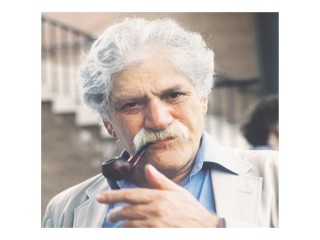
Jakov Lind biography
Date of birth : 1927-02-10
Date of death : 2007-02-16
Birthplace : Vienna, Austria
Nationality : Austrian-British
Category : Famous Figures
Last modified : 2011-07-08
Credited as : Writer, dark side, Counting My Steps
Almost invariably, Jakov Lind writes about the darker side of human experience, of existence in a senseless, nightmarish world in which heroism and intelligence are no assurance of survival. Instead, one survives day by day, somehow, anyhow, as in his own life, accounts of which he has given in Counting My Steps (1969), Numbers (1972), and The Journey to Jerusalem (1973). He lays out his life story not in a straightforward manner but in vignettes and episodes, yet there seem to be few gaps.
Lind was born on February 10, 1927, in Vienna that had its own native-born fascists; as early as 1934, life began to change for the Jews of Austria, including Lind and his family. He had a Jewish upbringing, though the family was not devout, and even as a boy he was already a Zionist. His mother, Rosa (Birnbaum) Landwirth, was an amateur poet and had studied the violin. His father, Simon, a merchant, was a lover of music. Both parents fostered their children's creativity. Lind was already attempting to write books and aspired to be a poet in the 1930s. His oldest sister showed a talent for sketching fashion designs, and his second sister both drew and painted well enough to have earned the highest grades in her class.
In 1938 the German Army marched into Austria, and in December of that year, Lind left for Holland on a train full of children. Two years later, Holland also fell to the Nazis. Still, Lind managed to remain at large, and in June 1943, eluding the last large-scale roundup of Jews in Amsterdam, he assumed a new identity as Jan Gerard Overbeek, a laborer born in Gelderland, Holland.
Fearful of being sent to Poland to perform forced labor, Lind left Holland for Germany where he worked as a deckhand on a river barge that plied the Rhine. In November 1944, he met a German who was ostensibly involved in metallurgical research for the Third Reich's Ministry of Aviation. Lind delivered envelopes for him. After Hitler had died, the youth confessed his true identity to his employer, at which point the so-called metallurgist revealed that he had been involved in nuclear research and had been passing information to the Allies through a Swiss corporation, in which activity Lind had unwittingly assisted.
With the end of the war, Lind went to Palestine where he took the name of Jakov Chaklan, then returned to Europe where he spent a few years working at various jobs which involved manual labor, acting, and editing. In 1955, he married a literary agent, Faith Henry, and the couple had two children, Simon and Oona. The marriage did not last. Lind lived mainly in London after 1956, though he spent time abroad. During one sojourn, he was writer-in-residence at Long Island University in New York during the academic year 1966-1967.
He himself pointed to autobiographical influences in Soul of Wood (1962) and Landscape in Concrete (1963). In the first story of Soul of Wood, from which the collection of stories takes its title, a paralyzed Jewish youth, Anton Barth, is taken into the protection of a former employee of his parents. The former employee hopes to benefit after the war from having befriended a Jew. Again and again, the helplessness of young Barth is emphasized until it becomes apparent that this helplessness, this paralysis, is a metaphor for the helplessness of the Jews under the Nazis. In Lind's works, many of the characters are obsessed. In Landscape in Concrete, for instance, the not-too-bright young Wehrmacht (army) sergeant is so upset by the muddiness of the battlefields that he wants to tidy everything up with concrete, to put everything under cement. If the theme of the powerlessness of the individual in the face of tyranny is emphasized in his early work, it is even more apparent in his later work, as in his novella Travels to the Enu: The Story of a Shipwreck (1982), in which the crew and the captain are criminals, and the passengers, who are made to do the work of the crew, are the victims of these criminals.
There is no doubt that Lind's subject as a writer is the fascism he experienced in the formative period of his life, first under Austria's native fascists, whose real influence was felt in 1934. He himself had suffered under fascism, and the Nazis had killed his parents. He was objective enough and wise enough in the ways of the world, however, to realize that fascists have no monopoly on cruelty, as Travels to the Enu demonstrates. Nor must the reader conclude that because Lind seems to be saying that heroism and courage may not save oneself that the author admires wit and cunning more. His use of a setting in Travels to the Enu that is far removed from Austria or Nazi Germany is proof of his belief in the universality of cruelty, and his vivid depiction of cruelty and its underlying motives demonstrate an understanding of human psychology. As one enters Lind's bleak and almost despairing world, it is for the discerning reader to contrast this world with the ideal world, where kindness and decency are the rule and compassion is no rarity.
















